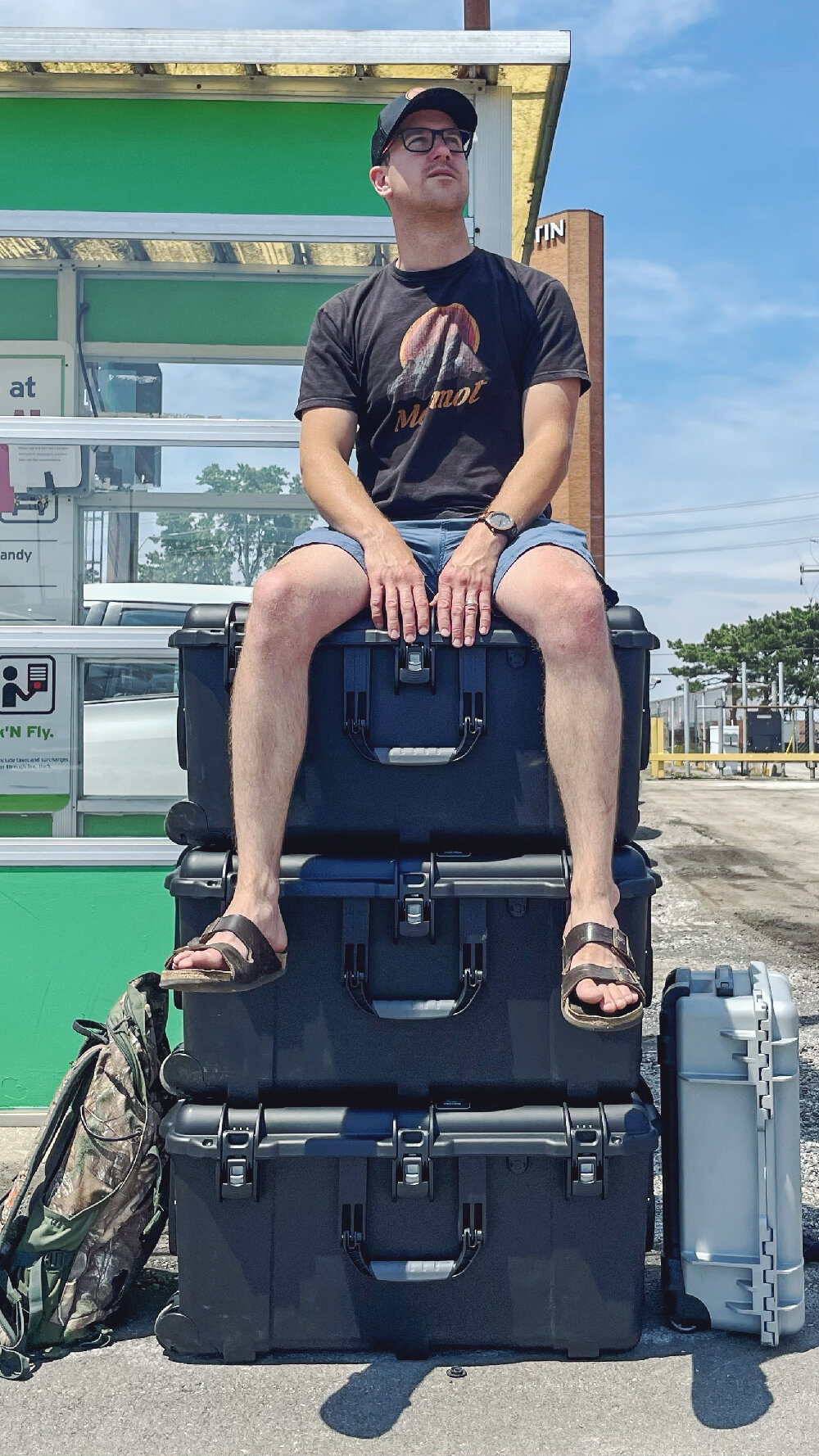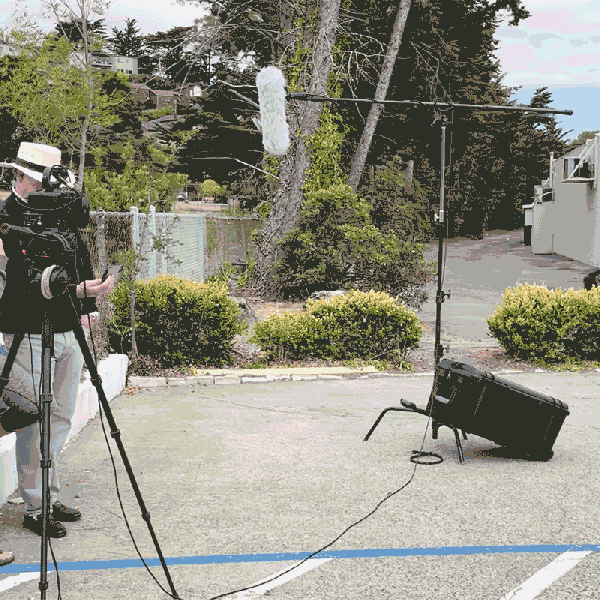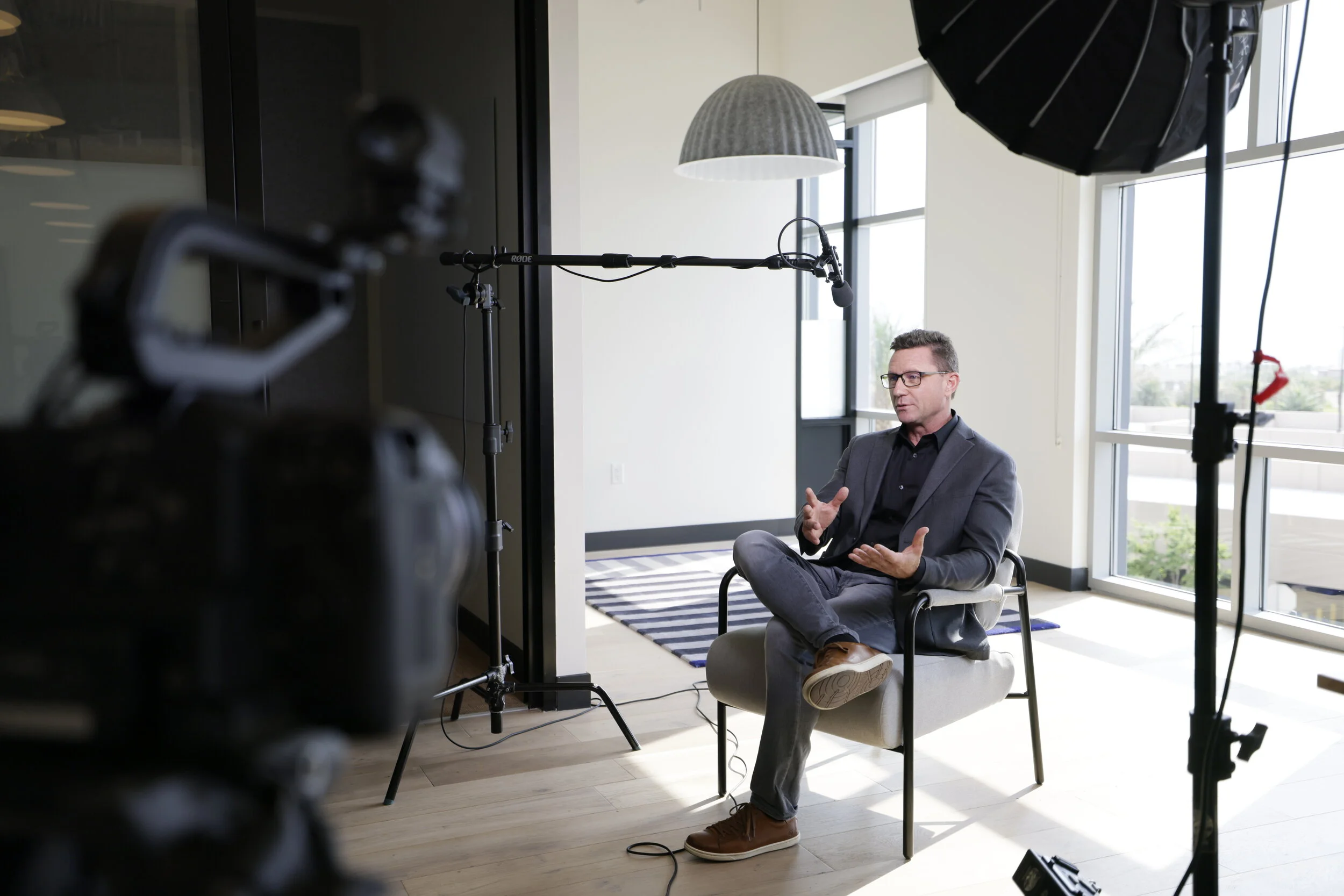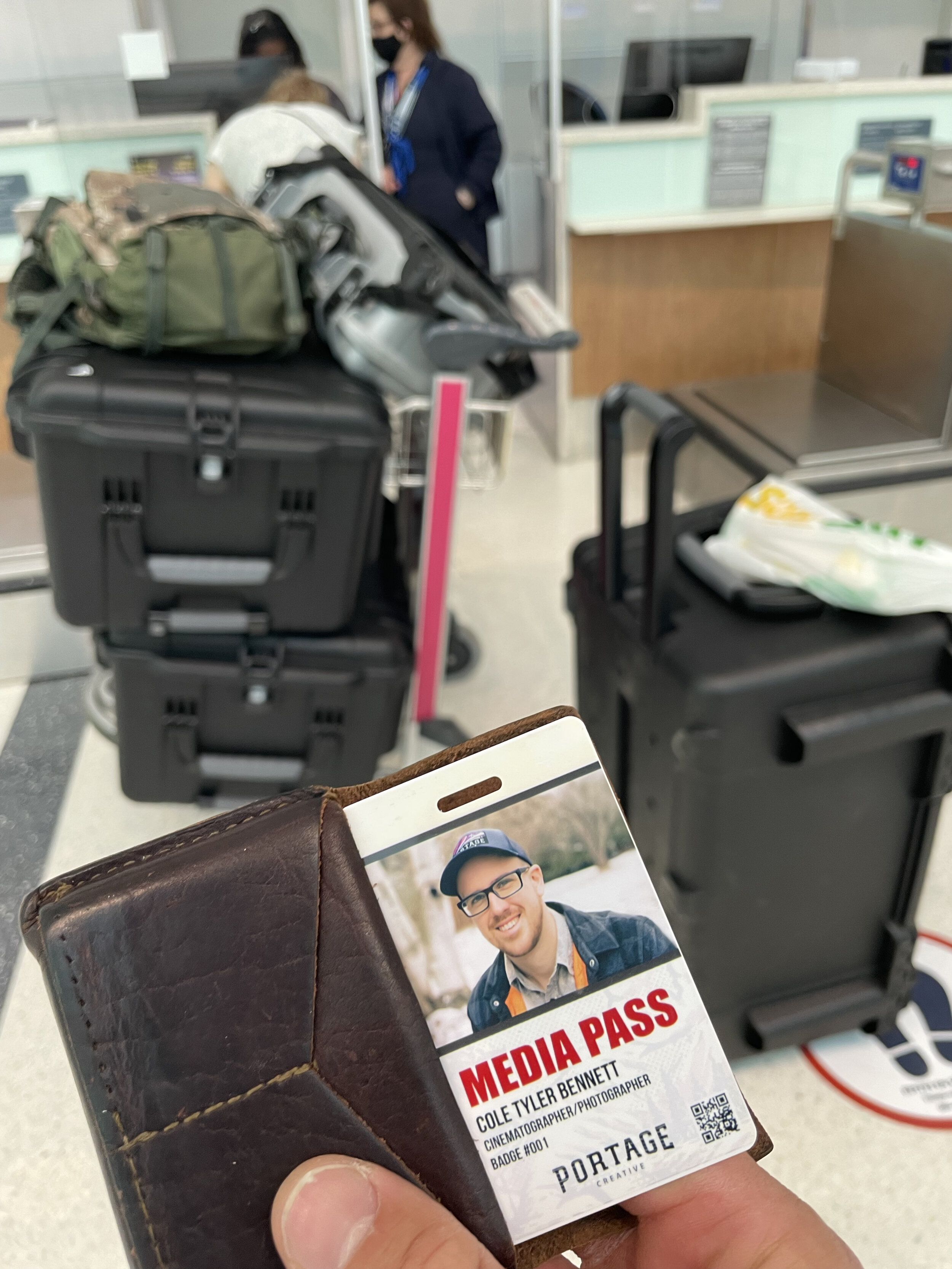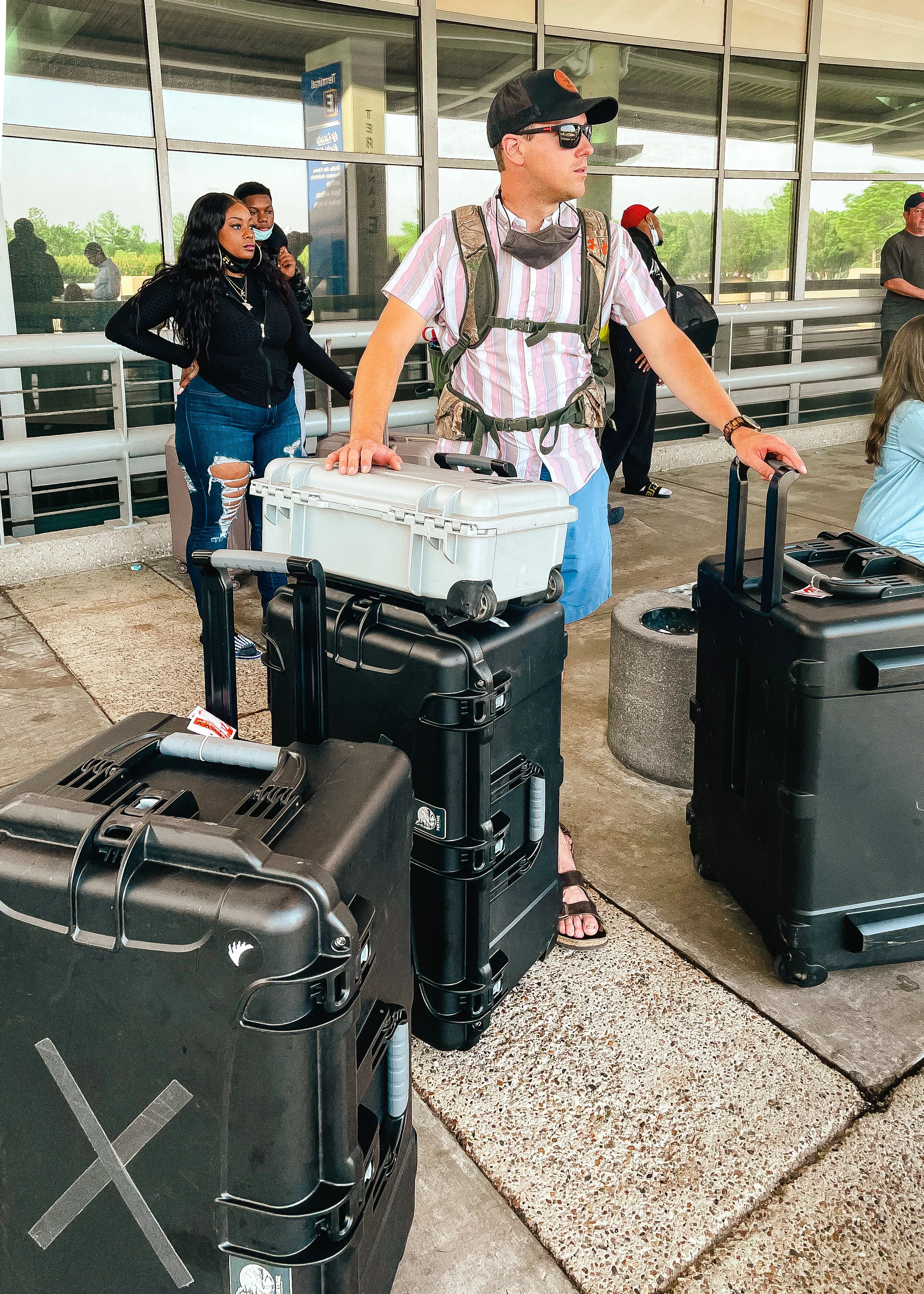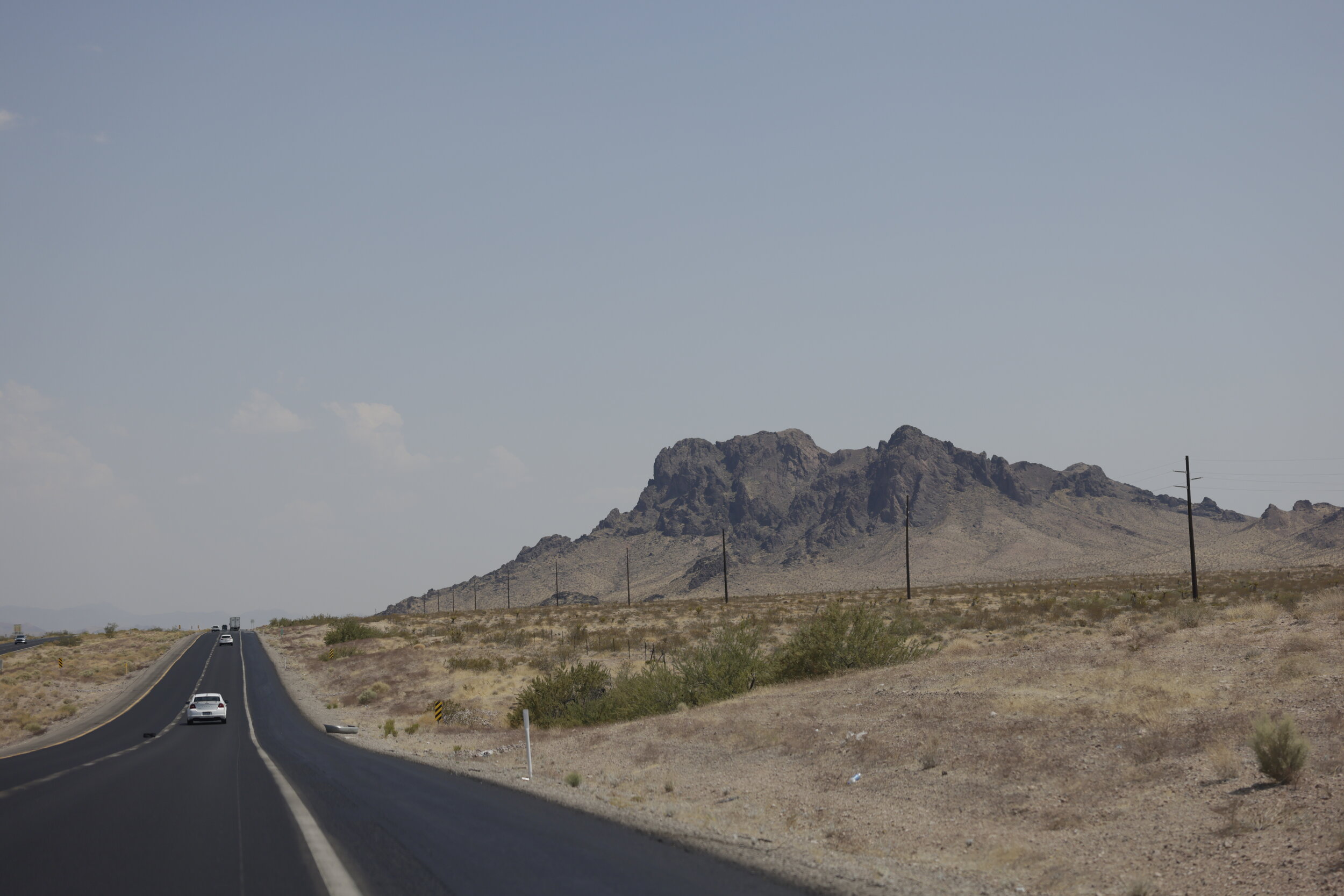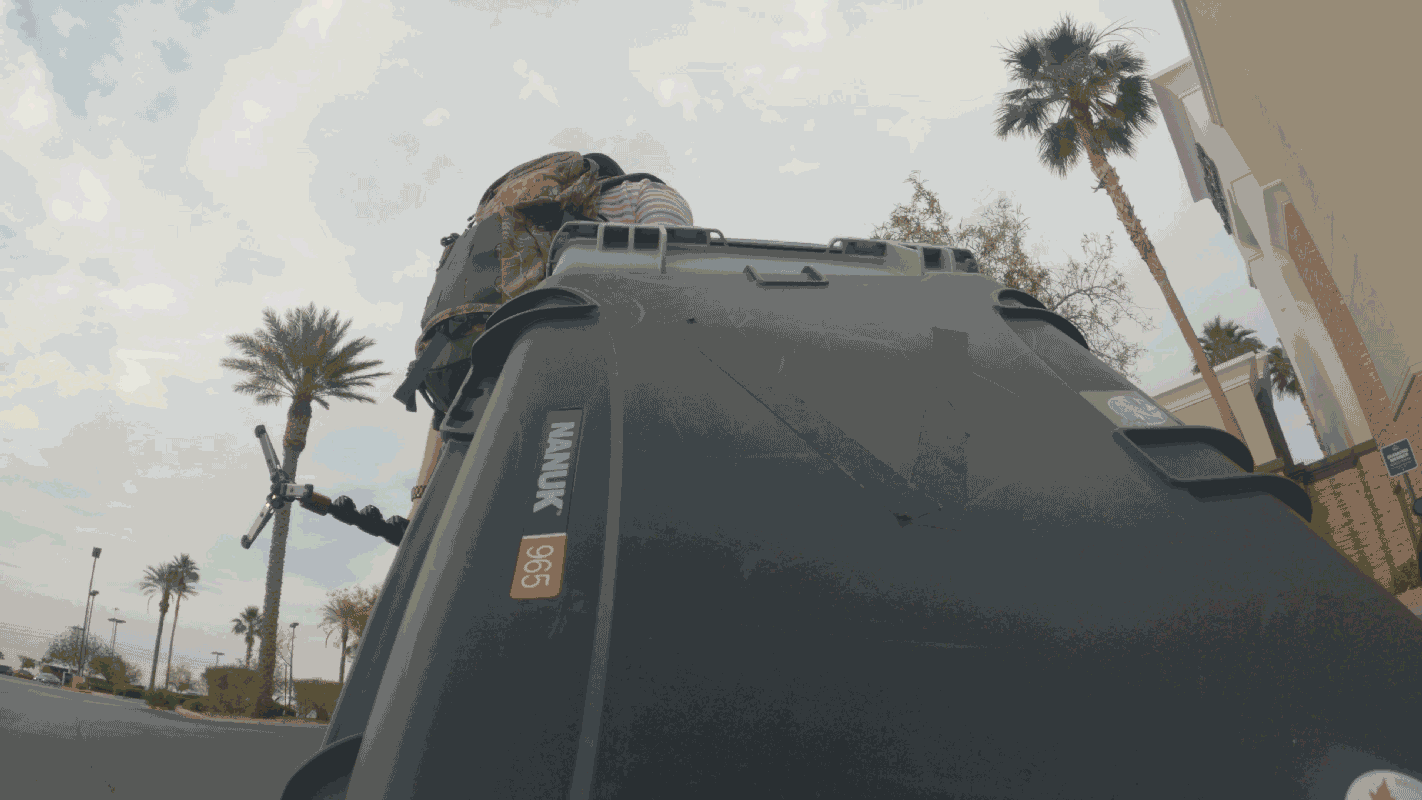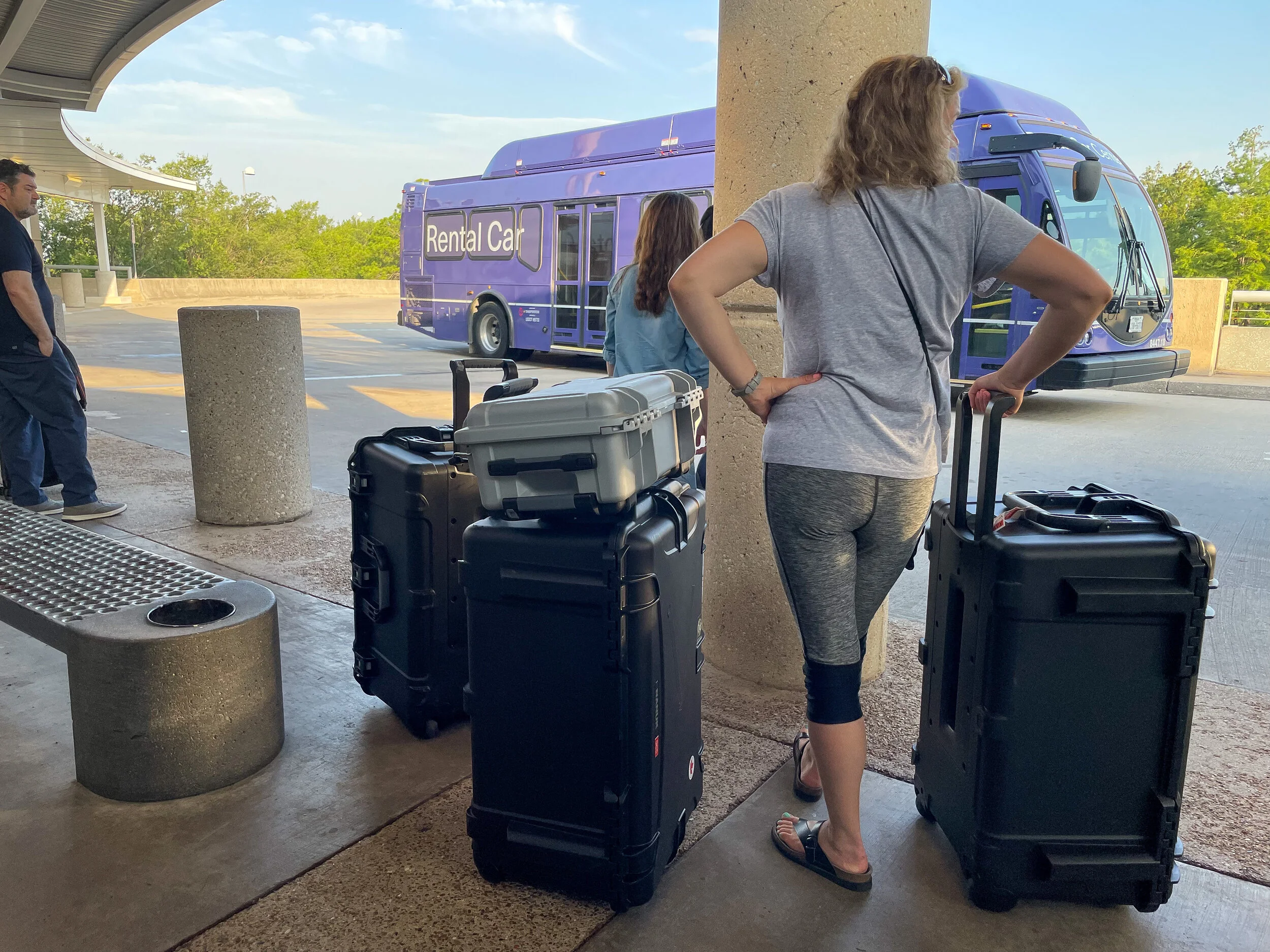How we avoid compromising quality for our international clients.
Traveling long distances with large quantities of video production equipment sucks.
It’s not the cameras, lenses, batteries, and memory cards that make it difficult — those all pack nicely into a backpack or wheeled carry-on.
No. It’s the lighting. The light stands. The tripods. The motion-controlled slider. The gimbal. The sandbags.
Okay, I’m kidding about the sandbags.
But seriously— I feel a sense of conviction to provide the best quality we can, and that means having access to the right equipment. Whether a client is hiring us to shoot something for them next door or across the globe, we want to be prepared to give them the same quality.
So, WE BRING A LOT OF GEAR.
Microphones, for example.
We own the industry-standard Sennheiser MKH416 microphone with a blimp and dead cat for dealing with windy conditions. It’s a legendary microphone for filming outside. It captures both directional and natural sounds and does a decent job of not picking up unwanted background noise.
However, because of the pickup pattern of the mic, it doesn’t work as well when recording indoor spaces where reverb is an issue. That’s why we also bring our Sennheiser MKH50 — another beautiful microphone that cuts down on the effect of reverb. Its unique pickup pattern makes it sound less natural when recording vocals outdoors.
It’s ideal to have both on hand when we’re not sure what environments we might find ourselves in.
Sennheiser MKH416 with Rode Carbon Fibre boom pole and Rode blimp and dead cat. Avenger shorty c-stand with turtle base, and the Kupo extension arm to get the hieght. How do you like our makeshift “sandbag” with the Nanuk 965 case?
On this last trip down to the States, both microphones were put to good use. The MKH416 came out of the kit just off the bay in Sausalito, near San Francisco.
The MKH50 did its thing in a small office suffering from reverberation in Prescott Valley, Arizona. We also used it for two days of interviews in an office building in Las Vegas.
Microphones don’t take up much space. But a c-stand, grip head, boom mate, boom pole, and blimp — all needed to capture good sound with a boom mic— those take-up space.
The lavalier mic and wireless pack stayed in the case the whole trip — but I had peace of mind knowing we could film in a situation where booming a mic overhead wasn’t an option.
Despite all the planning in the world, video and audio production requires us to adapt to unpredictable environments. In most cases, with the kinds of projects we work on, it’s better to carry around the extra gear we might need than to be stuck with equipment limitations we wouldn’t have back home.
When filming internationally, the right equipment allows us to leverage a variety of locations.
Las Vegas, Nevada, June 2021. Equipment: Canon C70, Sennheiser MKH50 shotgun mic, and Aputure 300dii with the Dome Mini II soft box. This is our current go-to kit for indoor interviews when we’re traveling. For local work the only thing we might add is a bigger soft box.
Lighting.
As filmmakers, our goal is to guide attention and remove distractions. We want to guide the viewer to see and hear what we’re showing them and remove anything that might distract from the message we’re delivering.
Lighting should reinforce the story we want to tell.
We often work with existing light — but the best lit areas can be terrible for traffic or other unwanted background noise.
And the quiet spaces aren’t always the best-lit ones.
When we’re traveling for work, we make space for an Aputure 300d ii — a powerful LED light with piles of control.
On this trip, we had two full days of filming interviews in Las Vegas, Nevada. Shooting in one space for eight hours reveals how much natural light changes in a day. Clouds aren’t usually a worry in Las Vegas, but the sun is still moving across the sky and changing things.
A softbox placed in the same spot throughout the day meant we had consistent lighting on the subject, regardless of how the background changed. And, it really did save us a lot of time changing camera angles to match the changing sunlight.
Bringing the right gear maximizes the value we can bring to our clients in the limited window of time we have with them.
Motion control systems.
The one client we shot for during this trip designs and builds conveyor systems for car washes. Instead of the chain belt that many of us are familiar with — STI Conveyor allows the car wash guest to easily pull onto a conveyor belt instead, sit easy through the wash, and then pull away. It’s a very smooth experience for the person driving.
Because of the mechanical, smooth-moving nature of the product, I wanted our Kessler 2nd Shooter motion-controlled pan head and slider handy. I mount the camera, set keyframes on the slider so it moves in a way that mimics the conveyor belt.
I didn’t use it for every location during this trip — but it was great to have it with us for when I wanted it.
We have learned not to underestimate how a variety of equipment helps keep us creative.
Finding better ways to transport our equipment
Side note: I’d rather be seen driving a Jeep, but working out of a mini-van is hands down the most practical way to go.
We know we want to have our best kit with us when we’re shooting this kind of commercial work. A compact vlogger kit isn’t going to cut it.
How do we manage to lug all of this stuff with us?
In the past, for trips across Canada and into the U.S, we’ve carried fragile equipment in small and medium-sized Nanuk hard cases. We’ve jammed full-sized c-stands into a gun case, and put everything into oversized duffel bags.
It wasn’t the worst way to get things from A to B — but it had awkward moments. Especially when we were in a rush to be somewhere.
Multiple Nanuk cases stacked against each other amidst our clothing, toiletries, and tripods…the c-stands so long they’d get hung up as we got on and off the elevators and through doorways. The one oversized duffel just wanted to drag off the side of the baggage carts everywhere we went.
We wanted this trip to be different.
We wanted to streamline both traveling and production. With so many flights, rental vehicles, hotel rooms, and production days, the last thing I wanted was to struggle with jamming Nanuk cases into Cabelas duffel bags every other day and wondering where my toothbrush was.
5 flights. 4 rental vehicles. 17 days of filming and traveling.
There are two factors to balance when traveling and working across the country with video equipment. Heck, this applies to any job where equipment or tools are moving around with you to multiple locations.
When traveling with equipment, the focus is to keep the equipment safe. It doesn’t need to be accessible, because you're just trying to make sure it safely gets to where it needs to be.
When working with equipment, the focus is on accessibility and workflow. Sure, you want to keep the gear safe from the elements and from tumbling out of the back of the car, but the gear needs to be handy so you can use it to get the job done.
“If you can’t find a tool you’re looking for in 5 minutes, you’re losing money.” - My Dad
Getting better systems takes previsualization skills. You have to imagine the scenarios — or potential scenarios— you’re going to find yourself in and plan accordingly.
At first, I thought about getting some custom cases built. A friend recommended a company in Toronto that looked like they could put something together for us. But it would take substantial planning, and the price tag would be steep – especially with the price of lumber in 2021.
So I turned once again to Nanuk, to see what kind of large cases they have.
I’ve been protecting our equipment in Nanuk cases for about 8 years now. Maybe longer. They’ve held up against all kinds of abuse.
Image borrowed from hardcases.ca— where you should buy your Nanuk cases from :)
Looking at the dimensions of the Nanuk 965, I wondered if I could manage to bring everything I needed — all the stuff I mentioned above — in only Nanuk cases. No jamming things into duffel bags and no scrambling and paying for a cart every time we hit an airport.
When I feel like I’ve got the right system to get the job done, I enjoy planning and packing for our video work.
I reached out to David, the founder of Hardcases.ca — one of my favourite online stores. We’ve done some videos for David in the past, and I wondered if he’d be interested in another video of this 17-day adventure we were about to embark on.
I could use some new cases, and maybe Nanuk could use a new video. We worked something out, the cases showed up, and I got to work.
Finding more compact c-stands.
The biggest challenge, after deciding to go with the 965 wheeled cases, was our c-stands. They’re long and heavy and a necessary evil when rigging a boom pole or light with a softbox. After some conversations with some other industry pros, I found this 20” c-stand riser column from B&H. The column slides into a standard c-stand turtle base. It also fits diagonally into a Nanuk 965.
The 20” columns are tall enough to light or boom a sitting person but aren’t quite tall enough to rig a light or boom pole above a standing person. After some digging, I found this 24” Kupo baby Arm Exenstion, which pops on top of any light stand and adds 24” of height. They also fit diagonally on the top shelf of the padded divider in the 965.
Stackable, for your leisure.
We ended up taking three Nanuk 965 cases; two with the padded dividers and one empty. We loaded most equipment in the two with the padded dividers and used the third for clothing, toiletries, extra footwear, and some grip equipment. We brought a Nanuk 935, and a backpack for carry-on.
Then we headed to the airport.
Carry-on luggage.
I don’t like keeping my eggs in one basket.
I keep a basic video kit in our carry-on, in case checked baggage is ever delayed, as well as a copy of the footage we’ve captured.
I kept one SSD hard drive packed into the checked baggage, and one packed in my carry-on. Lithium batteries aren’t allowed in checked baggage, so those went in our carry-on as well along with a Macbook Pro. We kept all of this and some extras packed between a Nanuk 935 and a backpack.
Lydia, wheeling the Nanuk 935 onto one of the smaller planes we took during this trip. It was tight for the overhead, but it fit.
Saving money on baggage fees.
Luggage weight has always been a challenge for us when traveling. The Nanuk 965’s are 25lbs empty. Add our production gear, and things get heavy fast.
Heavy = $$$ when you’re flying.
We’ve always paid for baggage fees and called it a business expense — that’s what it is.
But it’s expensive.
Fancy media pass = less $$$ in baggage fees.
I always figured “media” meant you were with a news company or something. Before this trip, I did some more reading and realized “media” applies to anyone traveling with video and sound equipment for work — as long as you have a media pass.
How to save 50% on your oversized video production luggage: print media passes for you and your employees.
How do you get a media pass?
You print one.
Seriously. The airlines just wanted to see a media pass with our name, the name of our company, a headshot, and a badge ID number.
You can look this up on the internet— people do this all across America, and it’s totally legit. The airline just wants to see a pass that indicates you work for a media production company — even if you own that production company.
I made media passes for both Lydia and me, and put the badge numbers 001 and 002 on them, along with a title and headshot. The badge number is important, for some reason.
Every single airline on this trip, with the exception of Air Canada, didn’t charge us the oversized or overweight pricing. We paid under $200 for one of our flights. without our media passes that one flight would have cost us around $700.
We’re talking about hundreds of dollars saved on baggage fees — all for some time in photoshop and $30 at an online print shop called Zazzle.
My summary of traveling with the Nanuk 965’s.
The invention of the wheel is no joke. We can push around WAY more equipment with this system. The wheels do great on pavement and in the airports, as well as hard-packed earth. Even in sandy environments, the wheel bearings are well protected.
I love the top shelf system with the padded dividers. Makes it easier to break up and organize equipment. In fact, I love the padded dividers in any Nanuk case. They’re super customizable and do a great job protecting equipment.
You can fit 3 965’s into the back of just about any SUV, which is great for traveling.
At the hotels, I felt really organized with these cases. Gear was accessible when I needed it and could be stacked out of the way when I didn’t.
Because of their height, the 965’s aren’t great to work out of when they’re in the back of a standard SUV. The lids don’t have room to open all the way. We didn’t have this problem with the JEEP Wrangler we rented. A minivan would have worked well too. I also discovered that the lids can easily be removed with a pair of pliers; just pull out the two pins in the back and remove the lid. I might try this next trip.
When we landed back at Pearson I noticed a wheel had broken off one of the cases. The baggage handler must’ve really tossed the case on a bad angle. It’s an easy fix and only takes an Allen key to replace. All Nanuks have a lifetime warranty, and the new wheel is in the mail.
The Nanuk 935 case stacks well on top of a standing 965. Add a bungee cord to the handle so it doesn’t slip off.
We’ve always worked hard to avoid compromising quality when traveling for clients. We’ve always packed just a little more equipment than we need. This new system means we’re packed in a safer and more organized way. Being better organized means less chaos when traveling and filming, and more downtime when we’re recharging.
Ultimately, it means we can show up for our clients and focus on our work.
